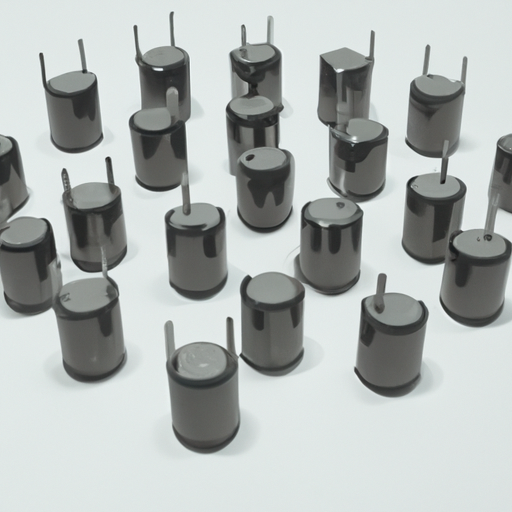Capacitors are essential components in electronic devices, used to store and release electrical energy. Among the various types of capacitors available, tantalum capacitors are widely used in electronic circuits due to their high capacitance, stability, and reliability. In this article, we will explore the mainstream production process of tantalum capacitors.

Tantalum Powder Production:
The first step in the production of tantalum capacitors is the production of tantalum powder. Tantalum ore is mined from the earth and processed to extract tantalum metal. The tantalum metal is then converted into tantalum powder through a process called powder metallurgy.
In the powder metallurgy process, tantalum metal is crushed into small particles and then mixed with a binder material to form a paste. The paste is then pressed into a mold to form a compacted powder. The compacted powder is then sintered at high temperatures to form solid tantalum powder.
The tantalum powder is then processed further to produce tantalum pellets, which are used as the raw material for capacitor production. The tantalum pellets are chemically treated to remove impurities and contaminants, ensuring the purity and quality of the tantalum material.
Capacitor Assembly:
Once the tantalum powder is produced, it is ready to be used in the assembly of tantalum capacitors. The capacitor assembly process involves several steps, including pellet formation, electrode deposition, and encapsulation.
1. Pellet Formation: The tantalum pellets are formed into the desired shape and size for the capacitor. The pellets are typically cylindrical in shape, with a thin layer of tantalum oxide on the surface to act as the dielectric material.
2. Electrode Deposition: The tantalum pellets are then coated with a conductive material, such as manganese dioxide, to form the capacitor's electrodes. The electrodes are deposited on the surface of the tantalum pellets using a process called sputtering or electroplating.
3. Encapsulation: Once the electrodes are deposited, the tantalum pellets are encapsulated in a protective casing to prevent damage and ensure the stability of the capacitor. The casing is typically made of epoxy resin or other insulating materials.
Testing:
After the tantalum capacitors are assembled, they undergo rigorous testing to ensure their quality and performance. The capacitors are tested for capacitance, voltage rating, leakage current, and other electrical parameters to meet the specifications required for electronic applications.
The testing process involves subjecting the capacitors to various electrical and environmental conditions, such as temperature, humidity, and vibration, to simulate real-world operating conditions. The capacitors that pass the testing process are then labeled and packaged for distribution to electronic manufacturers.
In conclusion, the production process of tantalum capacitors involves several steps, including tantalum powder production, capacitor assembly, and testing. Tantalum capacitors are essential components in electronic devices, providing high capacitance, stability, and reliability for a wide range of applications. By understanding the mainstream production process of tantalum capacitors, electronic manufacturers can ensure the quality and performance of their products.
Capacitors are essential components in electronic devices, used to store and release electrical energy. Among the various types of capacitors available, tantalum capacitors are widely used in electronic circuits due to their high capacitance, stability, and reliability. In this article, we will explore the mainstream production process of tantalum capacitors.

Tantalum Powder Production:
The first step in the production of tantalum capacitors is the production of tantalum powder. Tantalum ore is mined from the earth and processed to extract tantalum metal. The tantalum metal is then converted into tantalum powder through a process called powder metallurgy.
In the powder metallurgy process, tantalum metal is crushed into small particles and then mixed with a binder material to form a paste. The paste is then pressed into a mold to form a compacted powder. The compacted powder is then sintered at high temperatures to form solid tantalum powder.
The tantalum powder is then processed further to produce tantalum pellets, which are used as the raw material for capacitor production. The tantalum pellets are chemically treated to remove impurities and contaminants, ensuring the purity and quality of the tantalum material.
Capacitor Assembly:
Once the tantalum powder is produced, it is ready to be used in the assembly of tantalum capacitors. The capacitor assembly process involves several steps, including pellet formation, electrode deposition, and encapsulation.
1. Pellet Formation: The tantalum pellets are formed into the desired shape and size for the capacitor. The pellets are typically cylindrical in shape, with a thin layer of tantalum oxide on the surface to act as the dielectric material.
2. Electrode Deposition: The tantalum pellets are then coated with a conductive material, such as manganese dioxide, to form the capacitor's electrodes. The electrodes are deposited on the surface of the tantalum pellets using a process called sputtering or electroplating.
3. Encapsulation: Once the electrodes are deposited, the tantalum pellets are encapsulated in a protective casing to prevent damage and ensure the stability of the capacitor. The casing is typically made of epoxy resin or other insulating materials.
Testing:
After the tantalum capacitors are assembled, they undergo rigorous testing to ensure their quality and performance. The capacitors are tested for capacitance, voltage rating, leakage current, and other electrical parameters to meet the specifications required for electronic applications.
The testing process involves subjecting the capacitors to various electrical and environmental conditions, such as temperature, humidity, and vibration, to simulate real-world operating conditions. The capacitors that pass the testing process are then labeled and packaged for distribution to electronic manufacturers.
In conclusion, the production process of tantalum capacitors involves several steps, including tantalum powder production, capacitor assembly, and testing. Tantalum capacitors are essential components in electronic devices, providing high capacitance, stability, and reliability for a wide range of applications. By understanding the mainstream production process of tantalum capacitors, electronic manufacturers can ensure the quality and performance of their products.